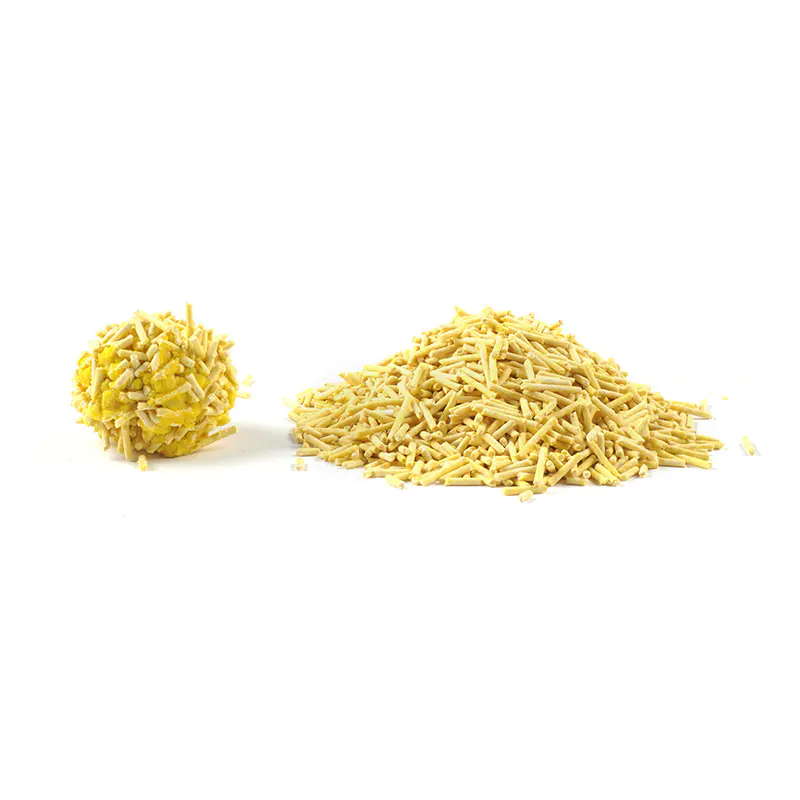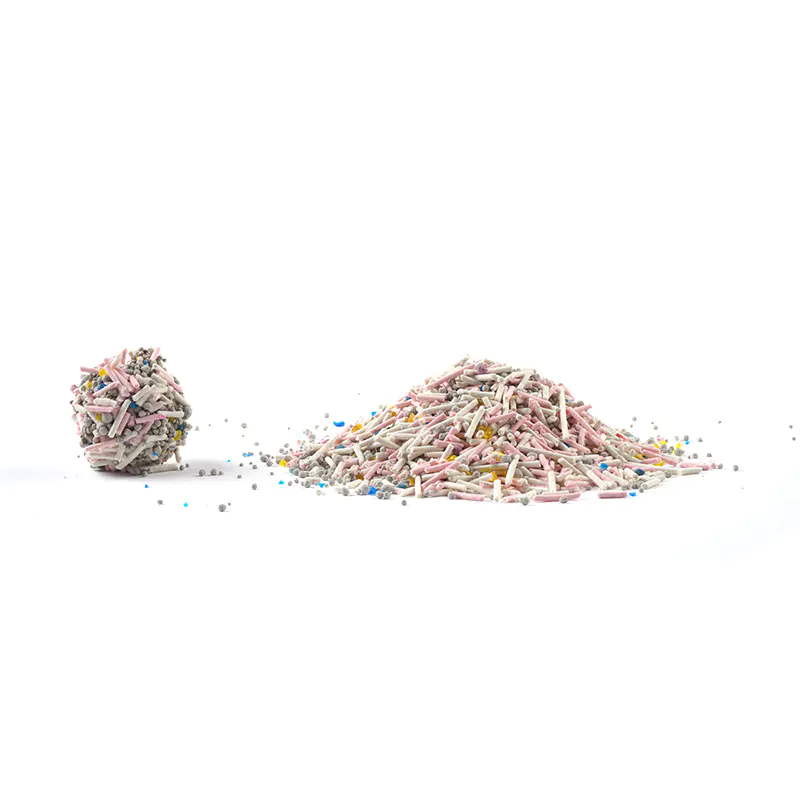
Industry News
Managing odor and maintaining cleanliness are two of the most important priorities for cat owners, especially when it comes to choosing the right litter. Among the many options available, Crystal Cat Litter has gained significant attention for its ability to control odor, absorb moisture, and limit the spread of bacteria. While traditional clay or clumping litters rely heavily on physical mechanisms to capture waste, Crystal Cat Litter works through a combination of its material structure and its moisture-locking capabilities. Understanding how these features suppress bacterial growth can help cat owners make more informed decisions about their pets’ hygiene needs.
Crystal Cat Litter is typically made from silica gel, a synthetic material created from sodium silicate. Although the word “gel” might suggest a soft texture, silica gel is actually hard and porous, formed into small beads or crystals. These crystals contain countless microscopic pores that attract and hold moisture through a process called adsorption—where water molecules adhere to the surface of the material rather than being absorbed internally.
The porous nature of the crystals is the key to their performance. Each granule can trap a large amount of liquid relative to its size, and as this moisture is held on the crystal’s surface, it becomes less available for microbial activity. Since most bacteria require moisture to thrive and reproduce, reducing accessible water immediately slows their growth.
Bacteria flourish in environments that offer warmth, nutrients, and especially moisture. Cat urine and feces naturally contain both moisture and organic matter, which makes used litter a potential breeding ground for microbes if left unmanaged. Crystal Cat Litter tackles this problem by rapidly drawing in moisture and locking it away inside the crystal structure.
When urine contacts the crystals, moisture is quickly wicked away from the surface, leaving the upper layer relatively dry. By minimizing wetness in the box, Crystal Cat Litter deprives bacteria of the water they need to multiply. A drier environment also discourages the formation of biofilms—sticky layers where bacteria can colonize and protect themselves. Without sustained moisture, these biofilms fail to form effectively, which further limits bacterial expansion.
In comparison, traditional clay clumping litters may solidify around liquid waste, but the moisture remains inside the clump. This can create pockets of dampness that allow bacteria to remain active until the clump is removed.
One of the primary reasons cat litter smells unpleasant is due to ammonia and other odor-producing compounds generated by bacterial breakdown of cat urine. When urea in cat urine is exposed to bacteria, it is converted to ammonia—a pungent, irritating gas. By keeping moisture and bacteria at low levels, Crystal Cat Litter inhibits this chemical conversion.
Because the crystals trap moisture on their surfaces and keep the rest of the litter bed dry, bacteria have fewer opportunities to interact with the urea. This significantly slows the rate at which ammonia builds up in the litter box. As a result, the litter remains fresher for longer, and unpleasant odors are reduced without relying on excessive fragrance or chemical additives.
The physical structure of the silica gel crystals also helps contain any odors that do form. Their molecular network can temporarily hold small amounts of gases, reducing the immediate release of unpleasant smells into the air.
While Crystal Cat Litter’s main advantage lies in its handling of moisture from urine, it also plays a role in reducing bacterial growth on feces. Solid waste naturally contains bacteria from the cat’s digestive system. Although removing feces promptly is still essential, the drying effect of the crystals can help slow bacterial proliferation while the waste remains in the litter box.
As the feces lose moisture, surface bacteria become less active. This can lessen odor development and help maintain a more sanitary environment, especially in multi-cat households or for owners who cannot scoop the box immediately.
Another subtle way Crystal Cat Litter helps manage bacterial spread is by reducing litter tracking. Because silica gel crystals are larger and less prone to sticking to a cat’s paws compared to fine clay particles, there is generally less material carried outside the litter box. This means fewer bacteria or waste particles are distributed throughout the home.
A tidier floor not only improves household hygiene but also decreases the likelihood of accidental contamination of surfaces frequently touched by people.

Unlike clumping litters that require frequent removal of urine clumps, Crystal Cat Litter often remains in the box for longer periods before needing to be replaced entirely. This does not mean bacteria are allowed to accumulate unchecked; instead, the litter’s moisture-adsorbing capacity ensures that the environment remains dry enough to discourage bacterial growth even during these longer cycles.
However, it is important to note that the litter must be stirred regularly to expose unused crystal surfaces and support continued moisture adsorption. If neglected, trapped moisture may concentrate in one area, reducing the litter’s ability to manage bacteria effectively.
A cleaner, drier litter box benefits not only hygiene but also feline behavior. Cats are known for their preference for cleanliness, and many avoid using a box that feels damp or smells strongly. By providing a relatively dry environment, Crystal Cat Litter reduces the likelihood of stress-related litter box avoidance—a behavioral issue that can lead to inappropriate elimination around the home.
Lower stress levels indirectly contribute to a cleaner litter area. When a cat consistently uses its designated box, waste remains contained, and bacteria are less likely to be spread elsewhere.
Even though Crystal Cat Litter is effective on its own, certain maintenance habits ensure the best results:
With consistent care, Crystal Cat Litter can maintain a highly sanitary environment that supports both odor control and reduced bacterial activity.
Crystal Cat Litter reduces bacterial growth primarily by controlling moisture—a critical factor in microbial activity. Its silica gel composition allows it to rapidly adsorb liquid waste, maintain a dry litter bed, slow bacterial reproduction, and limit odor formation. While it is not a replacement for regular litter box maintenance, its ability to create a cleaner and less hospitable environment for bacteria makes it a strong option for improving overall hygiene in homes with cats. By understanding how Crystal Cat Litter works and adopting simple maintenance practices, cat owners can ensure a fresher, more sanitary environment for both themselves and their pets.

Tofu Cat Litter

Tofu Cat Litter

Mixed Cat Litter

Mixed Cat Litter

Bentonite Cat Litter


Got Questions? Call us 24/7

+8615263229311
No.88, Quandu Road, Xigang Town, Tengzhou City, Shandong, China. (Sincere Industrial Park)

OEM Cat Litter Manufacturers Bulk Cat Litter Wholesale Biodegradable Cat Litter Company
